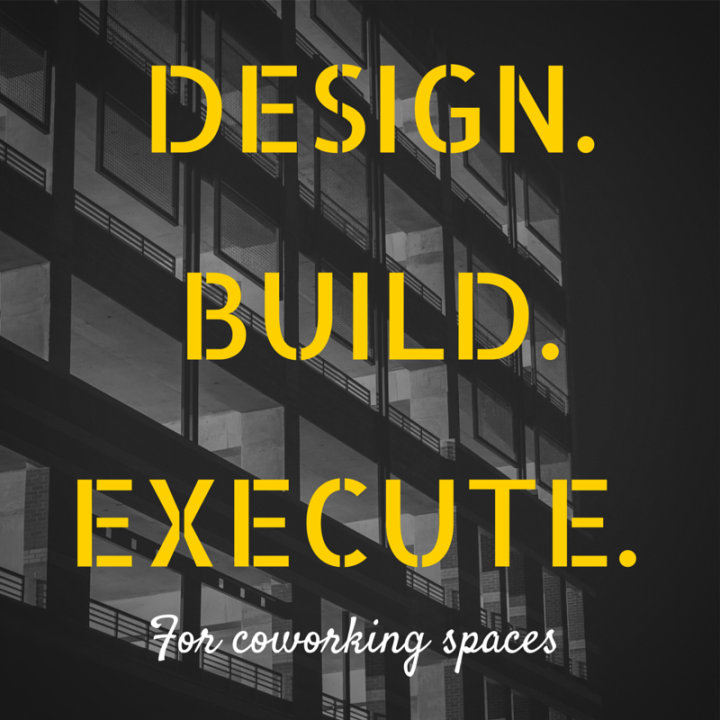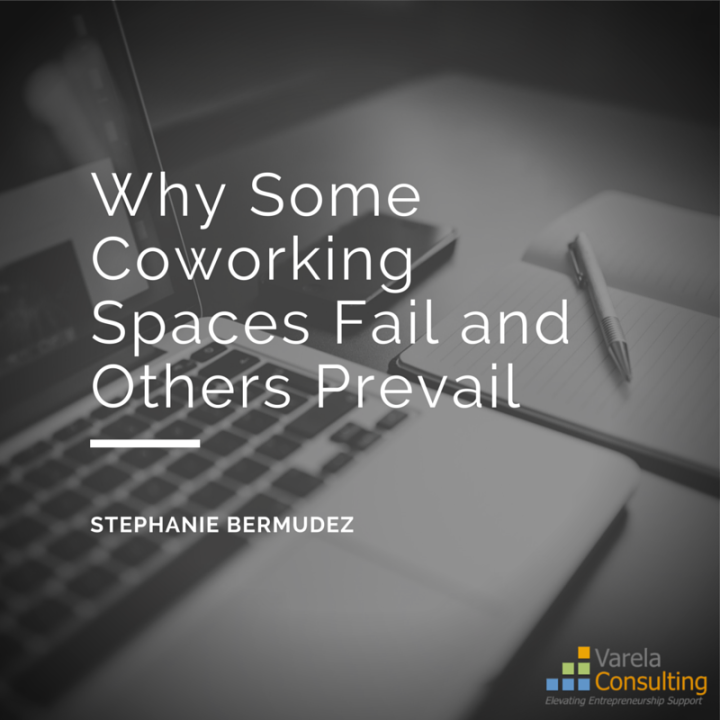Becoming a champion is a very special opportunity. Not everyone working in a shared workspace has the enthusiasm and skills that it takes to accomplish the tasks of champions, who must be highly motivated individuals with great communication skills, ease in interacting with both members internally and the public externally, and a high level of organizational skills as well.
Champions are the “faces” or “points of contact” in shared workspaces–the primary people responsible for ensuring that their spaces are operating smoothly, events are well-attended, and everything related to the spaces and members unfolds as seamlessly as possible. Their mission is to create successful spaces: settings in which like-minded people are encouraged and enabled to network, learn, collaborate, and grow, and enjoy their workspace experiences.
A champion’s role may expand depending upon his or her success in setting a strategic vision with the founder(s), ensuring that this vision is implemented, and increasing the financial strength and scope of the space as a whole. The champion knows how to engage community members to foster a sense of intrinsic ownership. Motivated by the core values of the shared space, the champion inspires other members to be similarly motivated and to contribute to establishing a feeling of true community.
A trained champion is a highly self-motivated person who is excited to be working in a collaborative environment. He or she has excellent organizational skills, is able to see what needs to be done, and makes it happen without the need for daily supervision or guidance. Possessing outstanding communication skills as well, the champion interfaces internally with members, existing networks, and the space founder(s), and externally through social media and the press.
A champion’s detailed responsibilities typically include the following: acting as the point of contact for members on a daily basis; on-boarding new and existing members; conducting tours for prospective members; and developing the workspace community by ensuring that each member is doing his or her part to collaborate to make the space run seamlessly. Champions are also responsible for initiating all communication and marketing both within the space and in the larger community. The champion creates and maintains the website, newsletters, blogs, special event flyers, and performs PR outreach by using social media and the press. Finally, special event organization and production also fall within the scope of a champion’s responsibilities.
Varela Consulting, a world leader in conducting trainings for shared workspace conception, development, and ongoing maintenance will soon be offering an eight-week Champion Training program, which will include two full days of on-boarding, plus two hours per week of ongoing support for the duration of the program. The champion training may also be extended once the basic program responsibilities have been mastered.
We will use videos, one-on-one sessions, and assigned readings to transmit the necessary skills. We will evaluate each champion continuously throughout the process to ensure understanding and retention based on rubrics specially designed for each responsibility detailed above.
If you work in a shared workspace and think that you have what it takes to become a true champion, or if you own or manage such a space and have identified one or more individuals whom you feel are well suited to take on these new and exciting responsibilities, please contact Varela Consulting for more information about our upcoming trainings.
We’ve developed an exciting and unique process for evaluating and implementing new coworking spaces within business incubators that we call “design-build-execute.” The process is already in effect and showing great success. The three-stage process allows us to help you to decide if you have all the information and resources you need in order to foster a successful and fun coworking space within your incubator, and then to proceed with building and implementation.
In the design phase, we factor in all the qualities that make up an effective coworking space, and then utilize these factors in designing your own totally unique workspace. These factors include traffic flow, creation of different types of offices, resident and rotating desks, conference rooms, and casual spaces, special lighting, access to business equipment—overall efficiency of the entire space. Also extremely important is the human appeal factor—how desirable the space is in terms of comfort, stimulation, relaxation, community-building, and esthetic appeal—and how good the coffee is! (See our last Blog, Why Some Coworking Space Fail and others Prevail.)
In the build phase, we monitor every step in the construction of the coworking space according to the design parameters we have agreed upon, to create with you a beautiful, user-friendly, efficient, appealing space that will encourage both members and clients to linger and continue to enjoy the space. Finding the right Community Manager also becomes critically important in this phase. We also help you to implement a champion-growing program, in which particularly enthusiastic members of the community are trained and groomed to take on more and more responsibility, with the goal of them eventually becoming managers themselves.
In the execute phase, we launch your coworking model into a beta space, during which everyone involved discovers what works and what may need to be improved upon. A period of beta time is critical in order to create a truly effective coworking space that genuinely meets the needs of all its members. Changes can still be implemented during this phase, according to feedback and input from everyone involved in the project.
For a coworking space to truly succeed, member (and client) needs and desires must be considered and factored in, and changes made organically. Management must be willing to listen to members’ input, and flex along with it, if the space is going to evolve into a beautiful, community-minded, and highly desirable place to work, a space in which members can meet and greet and share information and new ideas, and stimulate each other to call upon their own creativity to solve their work and/or design challenges. Above all, a good coworking space should be a fun place to work, such that members and clients go home at the end of a busy day feeling good about themselves and the way they have just passed their time!
The coworking movement is booming. About ten years ago, corporations began to downsize and allow employees the flexibility to work wirelessly from anywhere in the world. Independent workers then found themselves dealing with isolation, loneliness, and a lack of stimulation in their home offices, so they sought out workplaces where they could benefit from the camaraderie, collaboration, inspiration, safety, and opportunities to grow their businesses that well-designed and managed coworking spaces provide.
These spaces are no longer just for freelancers, nomads, telecommuters, misunderstood corporate refugees, or start-ups. Both individual “solopreneurs,” and entire innovative companies are discovering the progressive advantages of coworking, which include networking, business referrals and expansion, and building life-long personal and business relationships.
Today, coworking spaces exist worldwide. An estimated four new spaces open up each day, adding to the 6,000-some existing spaces—but unfortunately, these spaces close at about half that rate too. Something is obviously going right for the spaces that prevail, and wrong for the ones that fail. Perhaps many were based on the premise, “Build a fun and funky space and they will come.” Important factors have been overlooked in the construction and management of the spaces that have not succeeded.
Globally, we could likely benefit from the existence of many more of these shared spaces, as they are radically altering the concept of the plodding nine-to-five job for thousands of people. Ideally, millions would be able to take advantage of the many benefits offered by coworking.
From my experience and research, the effective development of a coworking space involves working in a beta space for six to twelve months, which permits for organic growth and development and allows for continuing research, occupant feedback, holding focus groups, tracking metrics, and connecting the space with external communities like universities. Beta spaces are temporary pop-up locations and serve as a great place to make small or large mistakes on a manageable scale.
In addition to the necessity for beta space, there are four major keys to success in a coworking space:
Environment
Anyone who’s been in a well-designed space will agree that the moment they walk in, there is an instant connection–or lack of connection–to the rooms. Recent studies have proven that people judge their physical environment within the first twenty seconds after entering it. Emergent research at the 2015 Global Coworking Conference Unconference revealed that, “Even in the context of talking about facilities and infrastructure, the data is clear: People value human space far above office space.”
The following factors contribute greatly to the efficiency and functionality of a coworking space:
- Location: High density urban spaces are more successful than those in rural areas.
- Building: The building should be in very good condition, easily accessible, provide plenty of parking, and preferably feature tenant-designed improvements.
- Infrastructure: The materials in the space must work as intended. They need to be able to absorb sound and balance energy. Consider too how certain materials may affect communication signals that are vital for today’s daily work activities.
- Layout: Keep in mind extroverts, introverts, and spaces where spontaneous meetings may occur. Plan for plenty of lounging around, informal meeting spaces, and private spaces.
- Furniture: Must be functional and of commercial grade. Ergonomic design concepts are becoming increasingly more popular and available.
- Equipment: Don’t overdo it, and don’t over-promise and under-deliver. Do your homework. Every space will have unique needs, so consider your infrastructure and work with certified network providers who are willing to coordinate with your local providers and vendors.
- Sound Levels: Location, the building itself, layout, and furniture selection all play a part in the sound levels produced. Focus more on dispersing noise rather than trying to enclose it.
Authenticity
- Get to know your members on an intimate basis, and create authentic relationships with them. Understand your members, and their available markets. They are most likely seeking meaningful relationships and personal and business transparency themselves.
- Be your own true self. Look beyond yourself and pay close attention to others and their needs.
- Stand out by combining what you know about your customers and your business and what you have learned from your own extensive experience. The choices you make concerning the environment, leadership, and the foundation you lay at beta for organic community growth all feed into genuine authenticity.
Leadership
Leaders are the ones who control, guide, and make extensive improvements to the environment. True leaders control what Simon Sinek refers to as, “The circle of safety.” The leader(s) of a coworking space must belong to the community, and lead through inspiration by setting examples of creativity, total integrity, and transparency. The members have to feel that the leadership serves them in order for them to choose to stay and, ultimately, to promote the space, its constituents, the vision, and the leaders.
Leaders are responsible for everyone’s sense of safety and connectedness: the community managers, the volunteers, the members, and the local representatives. Everyone plays a different role, but all support the space for the same reasons. Real estate-centric coworking spaces, by contrast, are about selling desks first, with good leadership and building community as only a secondary goal. Well-led, community-powered coworking spaces usually start with a community, not a space.
In the course of further development of this community, “champions” begin to emerge. These are usually members who become truly enthusiastic supporters of the concept of coworking in general, and their own coworking space in particular, who promote the space heavily and get involved in the day-to-day decisions about design and operation of the business. Champions can be groomed to become management, or even owners.
Community
Initiating, fostering, and nurturing a coworking community is an opportunity to bring a roomful of people together personally in our digitally-connected world. Everyone involved should feel a special sense of belonging to the whole, regardless of their backgrounds, their special areas of expertise, and their individual goals.
According Alex Hillman of Indy Hall, coworking space failures often have more to do with the failure to build community than space owners or managers care to admit. “The truth is that for every failure I’ve seen that blames it on some external factor, I’ve seen spaces succeed with those same external factors because they got the community part right.”
Coworking is more than the real estate and more than strong individual brands. Coworking is community. Coworking spaces allow people to connect, be more productive, collaborate, and be the happiest they’ve ever been while working, and this is what ultimately is making the movement accelerate so rapidly. These qualities are easily copied and have been copied by thousands.
Though many have tried to replicate the coworking experience, few have truly succeeded for one simple reason: The spaces alone are not what make coworking special. Coworking has evolved into something much more than space and connections. It represents idealism. A good coworking space is for those who long to be a part of a community that envisions a brighter and more productive world than today’s, a world in which big ideas and big global changes can evolve!
Number of Coworking Spaces Has Skyrocketed in the U.S.
1320 Coworking Spaces Worldwide
Coworking – Not Just For Early Adopters Anymore
Coworking: Any old spot won’t do
Leaders Eat Last: Why Some Teams Pull Together and Others Don’t by Simon Sinek (Book)
Coworking by the Numbers – The Results of the 2015 GCUC/Emergent Research Coworking Survey
Jacob Sayles Office Nomads, Seattle, Washington



